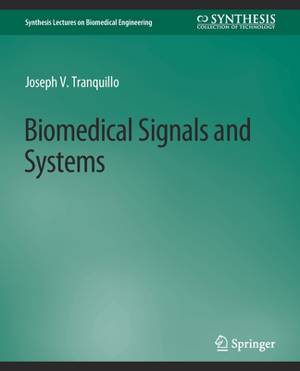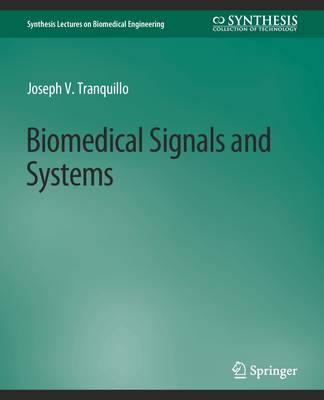
- Afhalen na 1 uur in een winkel met voorraad
- Gratis thuislevering in België vanaf € 30
- Ruim aanbod met 7 miljoen producten
- Afhalen na 1 uur in een winkel met voorraad
- Gratis thuislevering in België vanaf € 30
- Ruim aanbod met 7 miljoen producten
Zoeken
Omschrijving
Biomedical Signals and Systems is meant to accompany a one-semester undergraduate signals and systems course. It may also serve as a quick-start for graduate students or faculty interested in how signals and systems techniques can be applied to living systems. The biological nature of the examples allows for systems thinking to be applied to electrical, mechanical, fluid, chemical, thermal and even optical systems. Each chapter focuses on a topic from classic signals and systems theory: System block diagrams, mathematical models, transforms, stability, feedback, system response, control, time and frequency analysis and filters. Embedded within each chapter are examples from the biological world, ranging from medical devices to cell and molecular biology. While the focus of the book is on the theory of analog signals and systems, many chapters also introduce the corresponding topics in the digital realm. Although some derivations appear, the focus is on the concepts and how to apply them. Throughout the text, systems vocabulary is introduced which will allow the reader to read more advanced literature and communicate with scientist and engineers. Homework and Matlab simulation exercises are presented at the end of each chapter and challenge readers to not only perform calculations and simulations but also to recognize the real-world signals and systems around them. Table of Contents: Preface / Acknowledgments / Introduction / System Types / System Models / Laplace Transform / Block Diagrams / Stability / Feedback / System Response / Control / Time Domain Analysis / Frequency Domain Analysis / Filters / Author's Biography
Specificaties
Betrokkenen
- Auteur(s):
- Uitgeverij:
Inhoud
- Aantal bladzijden:
- 211
- Taal:
- Engels
- Reeks:
Eigenschappen
- Productcode (EAN):
- 9783031005312
- Verschijningsdatum:
- 12/12/2013
- Uitvoering:
- Paperback
- Formaat:
- Trade paperback (VS)
- Afmetingen:
- 190 mm x 235 mm
- Gewicht:
- 412 g

Alleen bij Standaard Boekhandel
+ 137 punten op je klantenkaart van Standaard Boekhandel
Beoordelingen
We publiceren alleen reviews die voldoen aan de voorwaarden voor reviews. Bekijk onze voorwaarden voor reviews.











